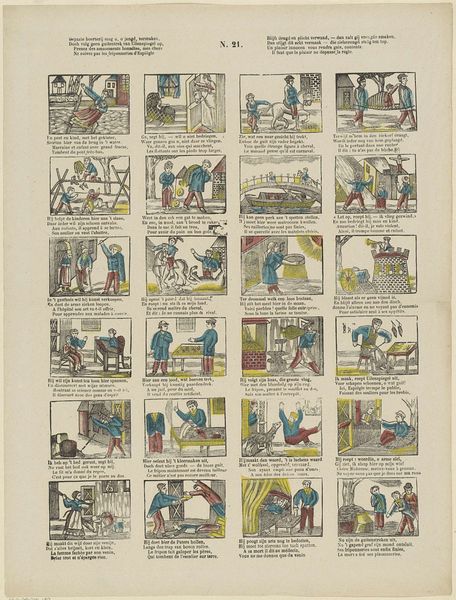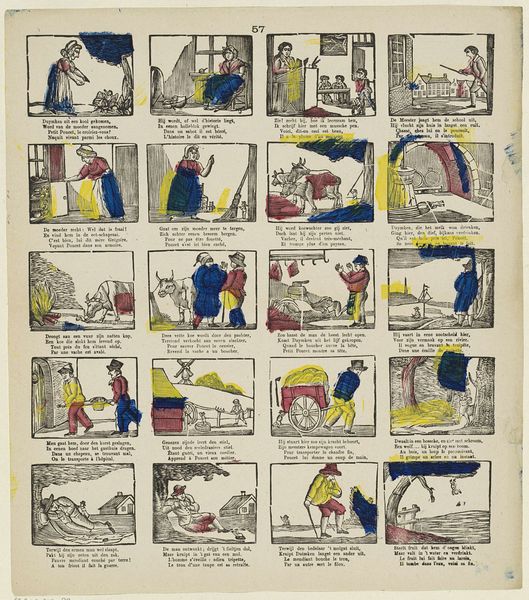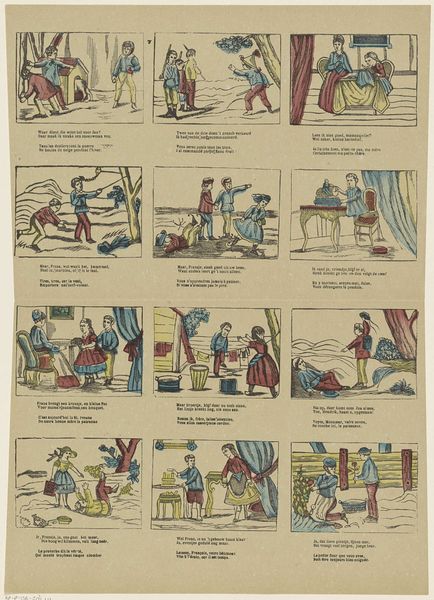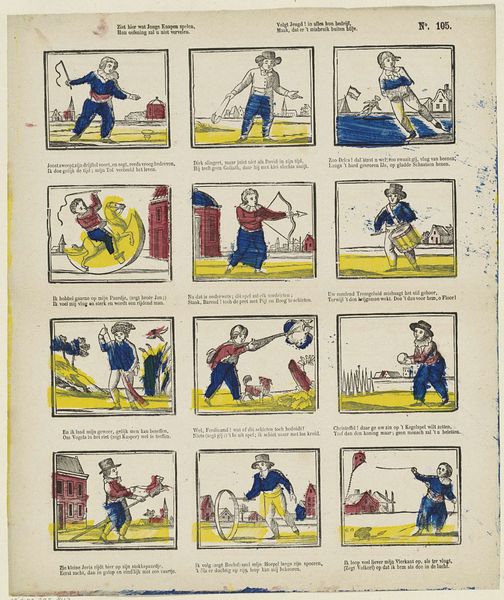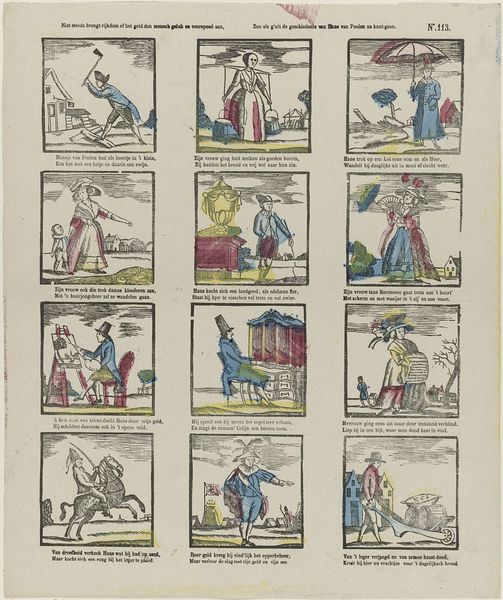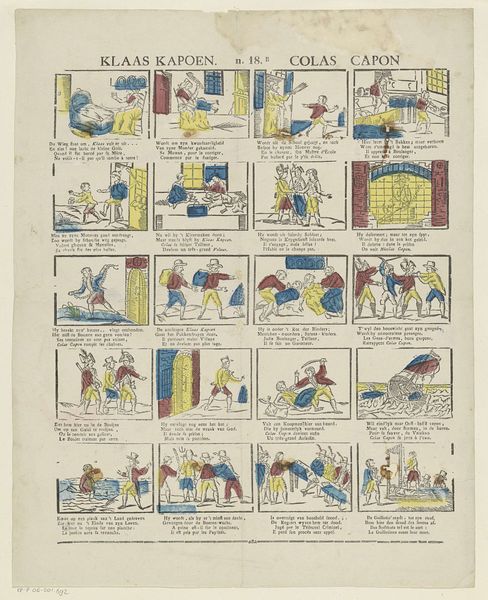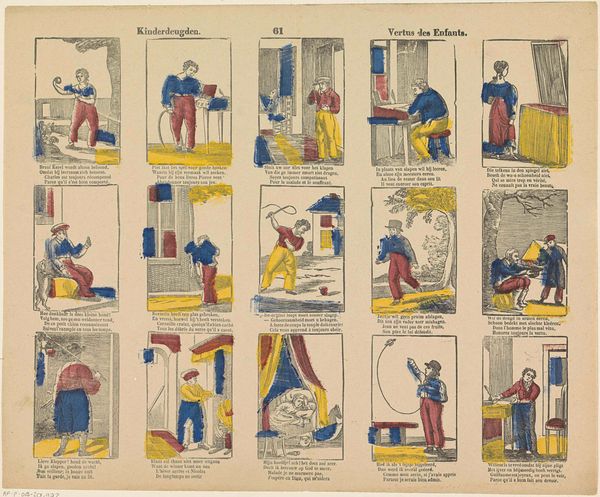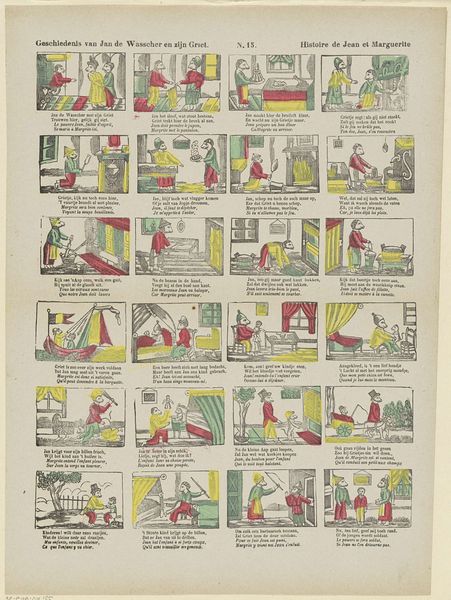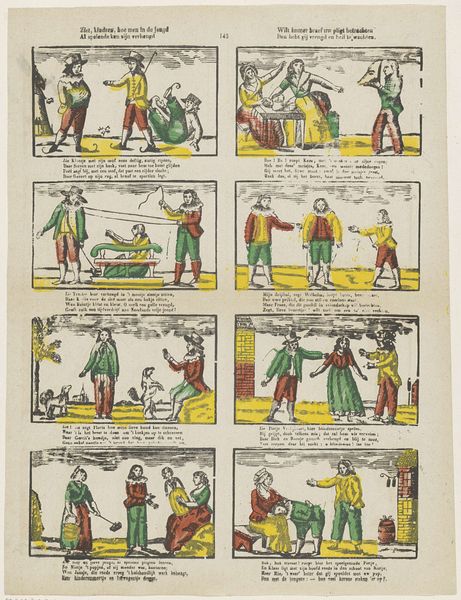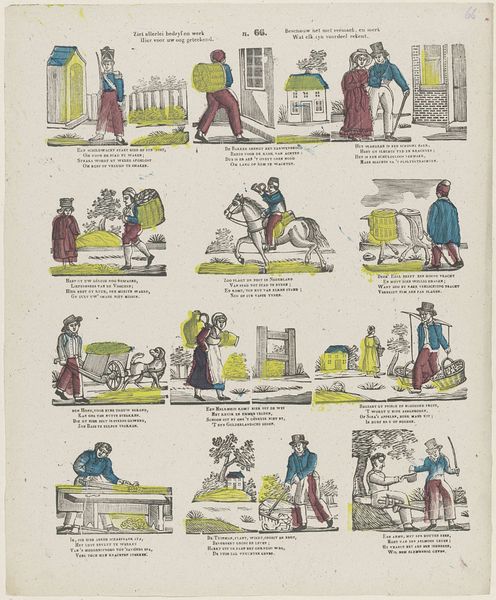
Zie Gulivers geval, de landen 't aller wegen, / Beschreven in deez' prent, zyn in de maen gelegen. / Jeunesse, dans ce tableau admire les passages, / Qu' éprouva Guliver, dans ses curieux voyages 1856 - 1900
0:00
0:00
Dimensions: height 381 mm, width 322 mm
Copyright: Rijks Museum: Open Domain
Curator: This intriguing print, dating from between 1856 and 1900 and attributed to Glenisson & Zonen, presents itself as a visual narrative: "Zie Gulivers geval, de landen 't aller wegen, / Beschreven in deez' prent, zyn in de maen gelegen. / Jeunesse, dans ce tableau admire les passages, / Qu'éprouva Guliver, dans ses curieux voyages." It appears to be a comic interpretation of Gulliver's travels, rendered in etching and engraving. Editor: My immediate reaction is one of childlike wonder tinged with melancholy. The scenes, presented like frames from a comic strip, have this naive, almost faded quality. They evoke a sense of old storybooks and distant lands. Curator: The cultural significance lies in its depiction of power dynamics. Gulliver, representing European colonial ambitions, encounters societies radically different. We see anxieties and perhaps veiled critiques about those early intersections between colonizers and colonized people visualized within a very constrained and ordered medium. Editor: Indeed, and the artist has chosen specific visual symbols. Take the figure of Gulliver himself – repeatedly presented dwarfed by either scale or circumstance – representing the cultural shock, the psychological impact of encountering difference. Even the moon in the upper portion, with its strangely serene expression, hints at larger cycles, the recurring drama of exploration. Curator: Precisely. One should look also at what appears to be implied critique. By visually presenting the tale through comic strip tropes, do we then reduce it to pure fantasy or do we reveal it to be a social reflection upon human experience. Is it commentary or promotion? Is Gulliver's folly that of empire's folly writ large? Editor: I wonder too about the coloring. The restrained application – primarily blues and reds – does not illustrate the full richness of these voyages. This controlled palette contributes a subdued quality, almost muting a story of encounters with unfamiliar people. What emotions and meanings might it then attempt to invoke in viewers? Curator: Perhaps the limited palette reduces these interactions to essential themes -- struggle, wonder, exploitation-- simplifying complex colonial encounters into more comprehensible units. It begs the question of how color acts to either veil truth or unveil what power systems conceal. Editor: In a world oversaturated with images, encountering such a restrained visual representation offers a different lens, a pause for thoughtful reflection, allowing the content to speak across history. Curator: Ultimately, this is more than a piece of historical illustration. It invites us to unpack, redraw, and reconsider old maps both material and ideological in our quest for equality.
Comments
No comments
Be the first to comment and join the conversation on the ultimate creative platform.


